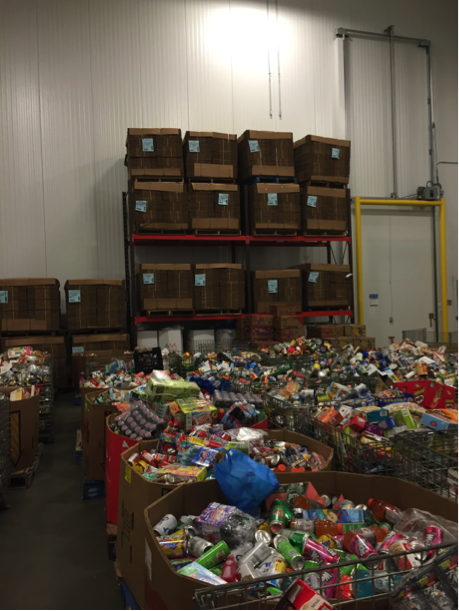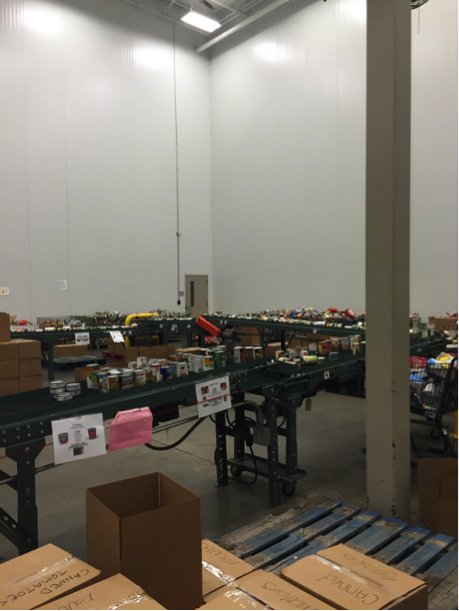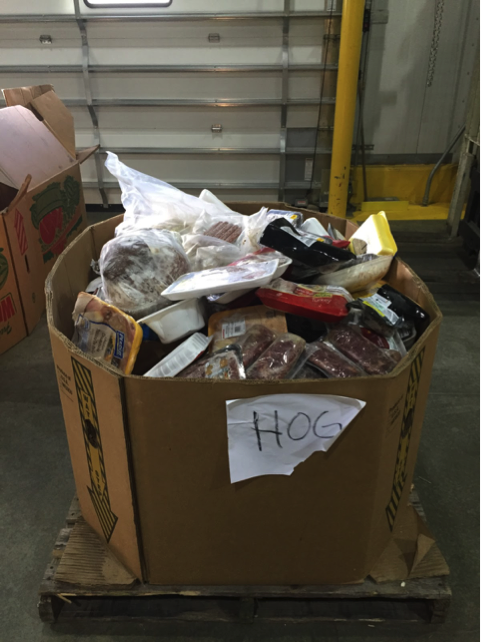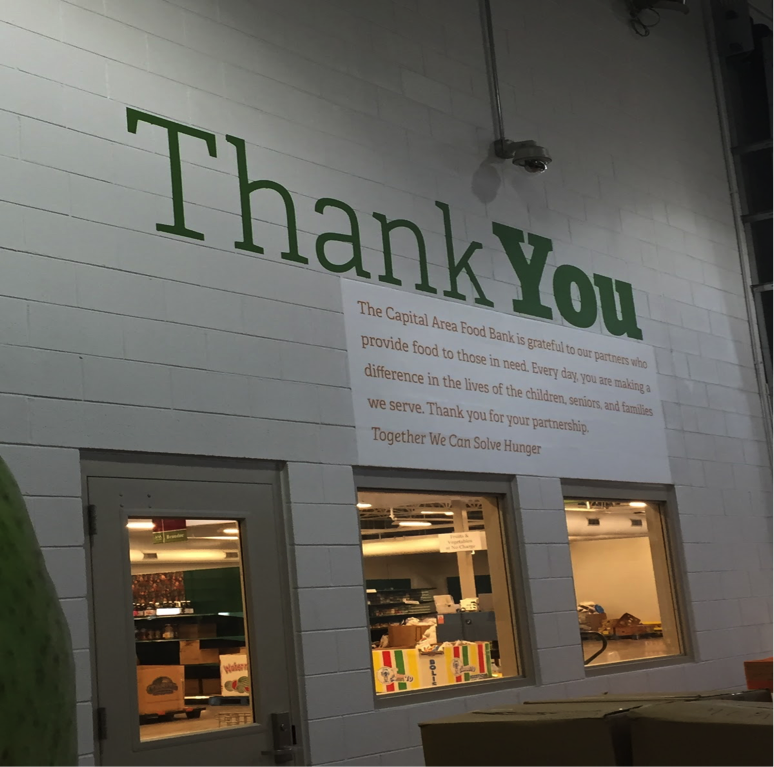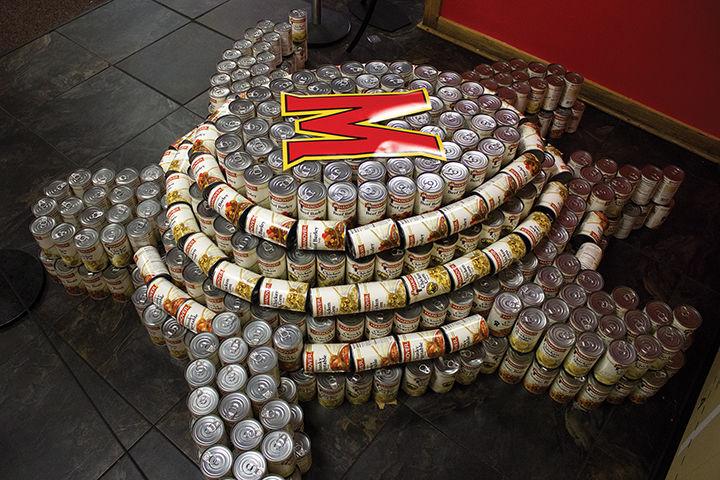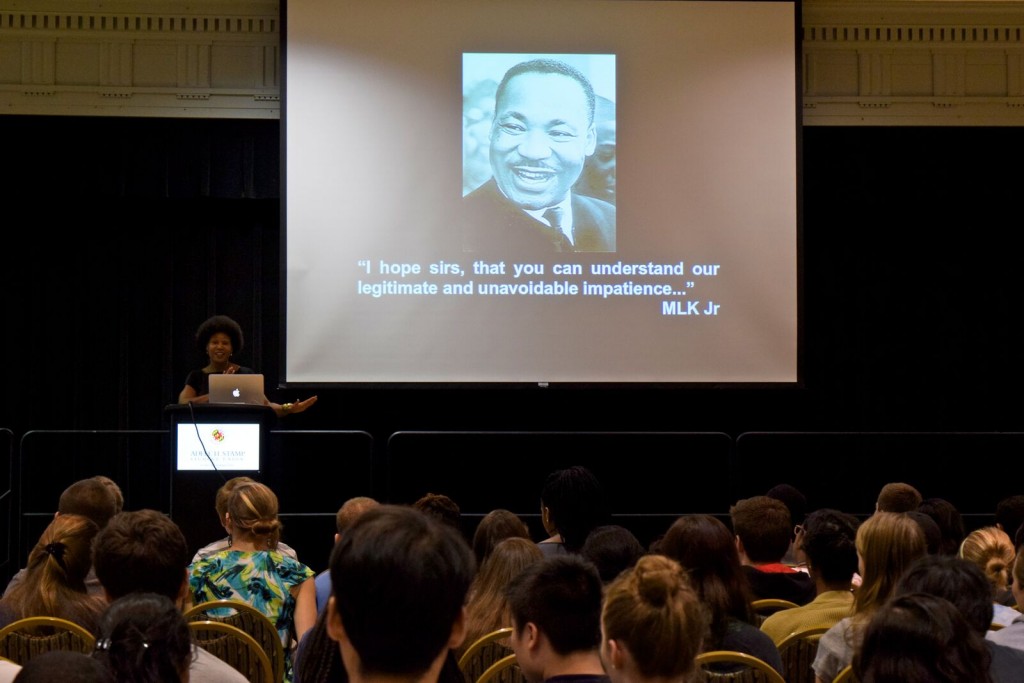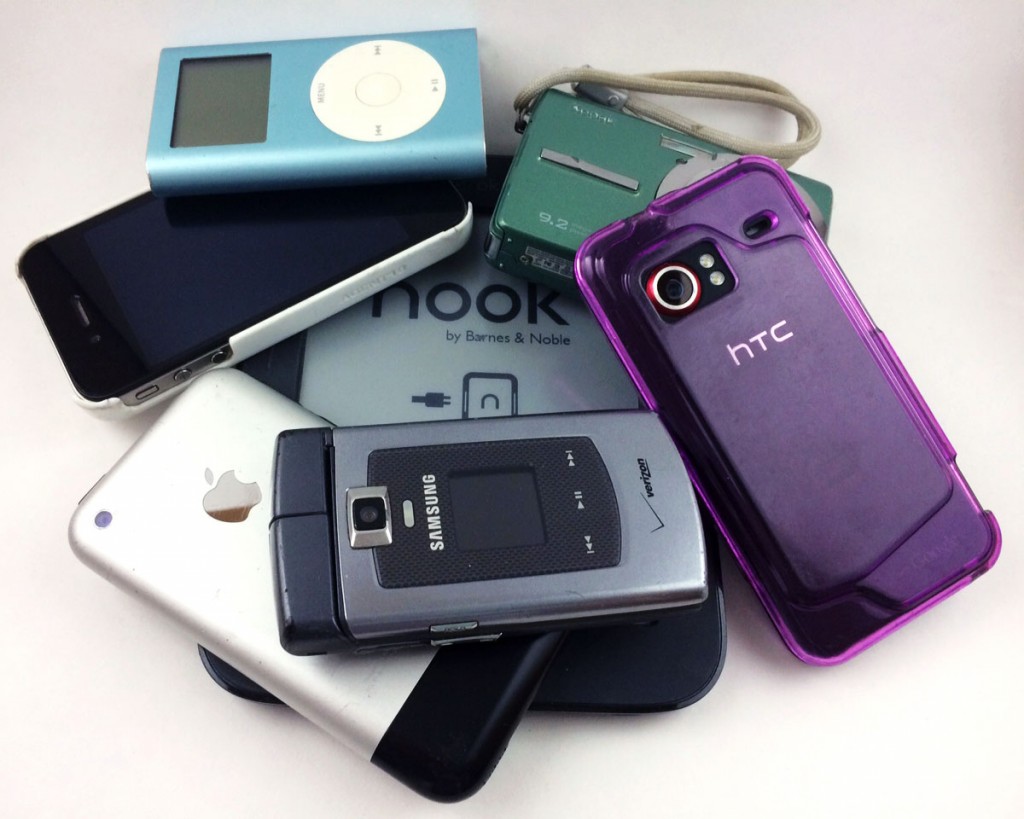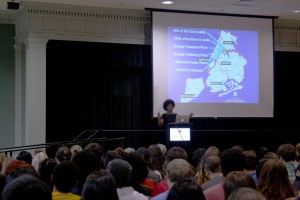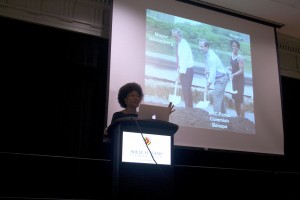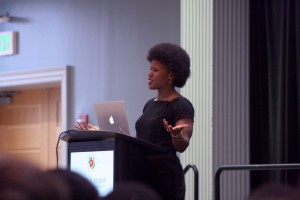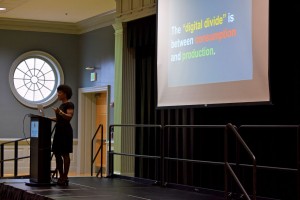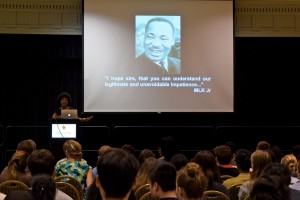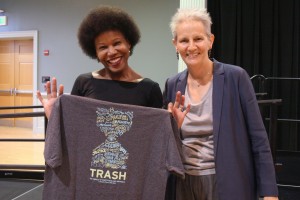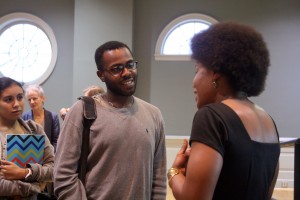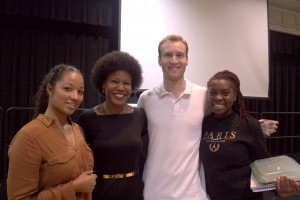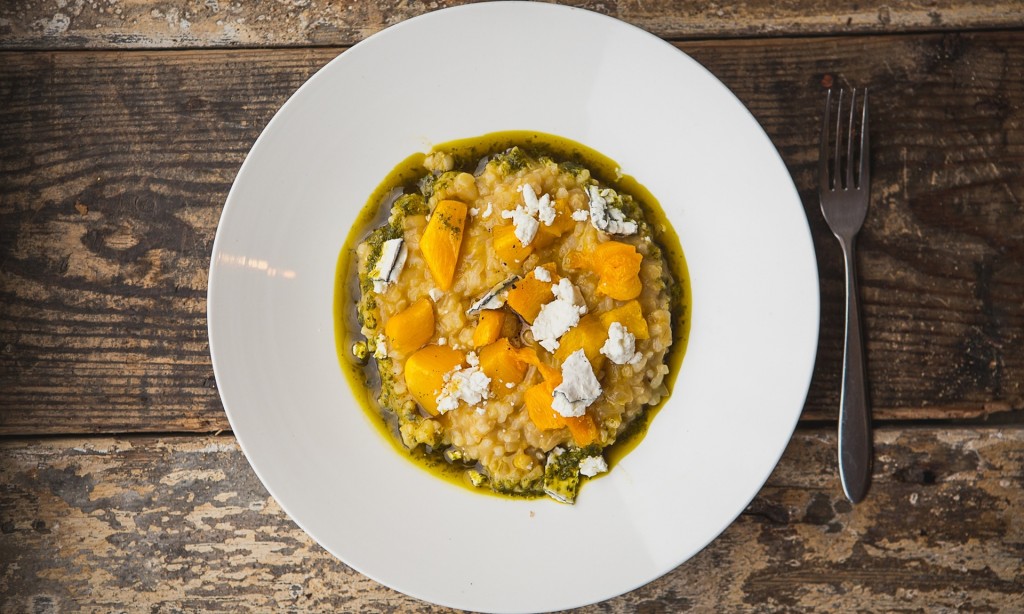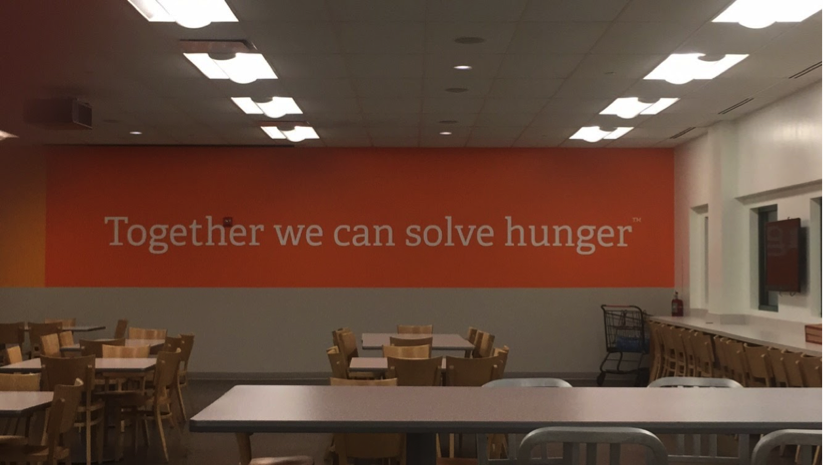
Freshman Katie Bemb shares her experience at Capital Area Food Bank.
During the first semester of Public Leadership Scholars, we were set up with various organizations for our service projects, depending on the social issue that we preferenced. My group chose to work with Capital Area Food Bank, which helps over 540,000 people get food every year. CAFB packs and distributes 42 million pounds of food per year, which equates to about 35 million meals.
The donations that CAFB receives are stored in their enormous warehouse until volunteers are able to sort and package the food for distribution. At the end of every volunteer shift, the manager tells you how many pounds of food you’ve packaged. During our first time there, we packed 6,000 pounds of beverages. Our second time volunteering, we helped pack 22,800 pounds of various meats. Both times, we left CAFB feeling exhausted, but also fulfilled.
What makes CAFB so unique is their partnerships with several grocery stores, who they channel most of their donations from. Giant Food Stores, in particular, will send tons of boxes filled with food to CAFB so that they can distribute it to those in need. This kind of partnership is essential, because otherwise, grocery stores trash the food that they do not sell (Or think that they cannot sell).
Are you interested in helping Capital Area Food Bank combat the issues of food waste and food insecurity? CAFB accepts volunteers every day of the week and is metro-accessible. Three people can pack at least 15,000 pounds of food in a morning. You can make a difference with CAFB, just like we were able to. Sign up to volunteer here: https://www.capitalareafoodbank.org/volunteer-5/.
- CAFB has a shuttle service that takes you directly from the metro station to their facility. Unfortunately, during our first visit, we were unaware of this service, and we ended up trekking two miles through residential areas in the dark. But with the help of Google Maps, we made it to our destination.
- On our first day at CAFB, we sorted beverages into water, soda, juice, and milk products, and then packaged them accordingly.
- (Morgan Armentrout) During our second visit, my group sorted and packaged various meats, including poultry, beef, pig, etc. This task is definitely not for any aspiring vegetarians; I found myself gagging constantly while being surrounded by thousands of tons of raw meat. But I worked through my initial disgust, and we managed to pack 22,800 pounds of meat working with the other volunteers.
- CAFB’s warehouse is larger than three football fields. Walking around their impressive facility, it was neat to think about all the food that they have stored there being distributed to food-insecure households.
- Organizations like CAFB are working to combat this enormous waste issue. It is essential to partner with organizations like CAFB that have found the beginning of a solution to America’s food waste problem. They don’t let any of their donations go to waste. For example, when they receive donations that are unsuitable for humans, they save it to feed to the hogs, rather than just throwing it in the trash.
- From left to right: Max Zissu, Katie Bemb, Morgan Armentrout, Elise Johnson
